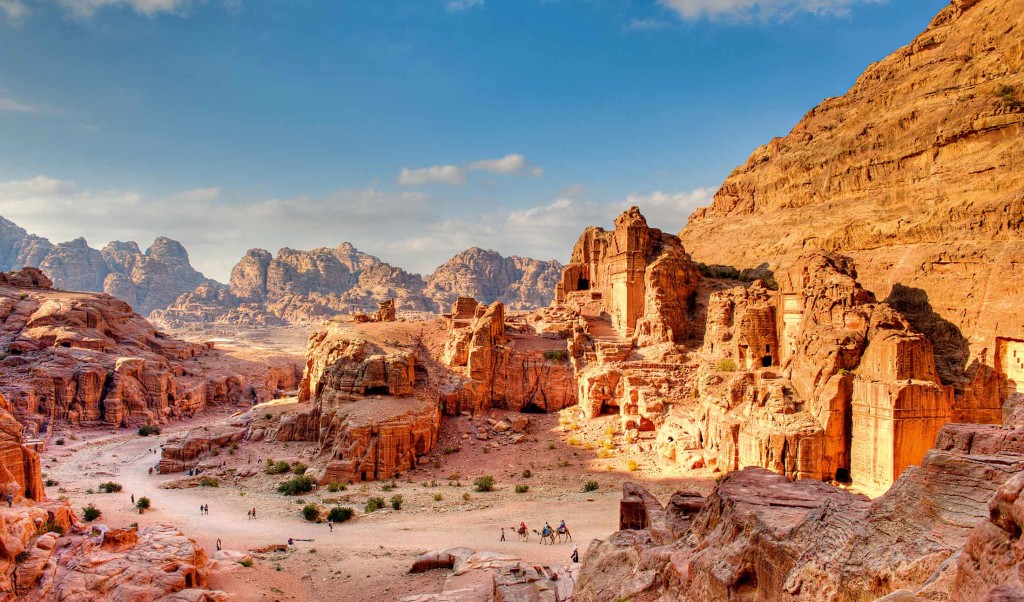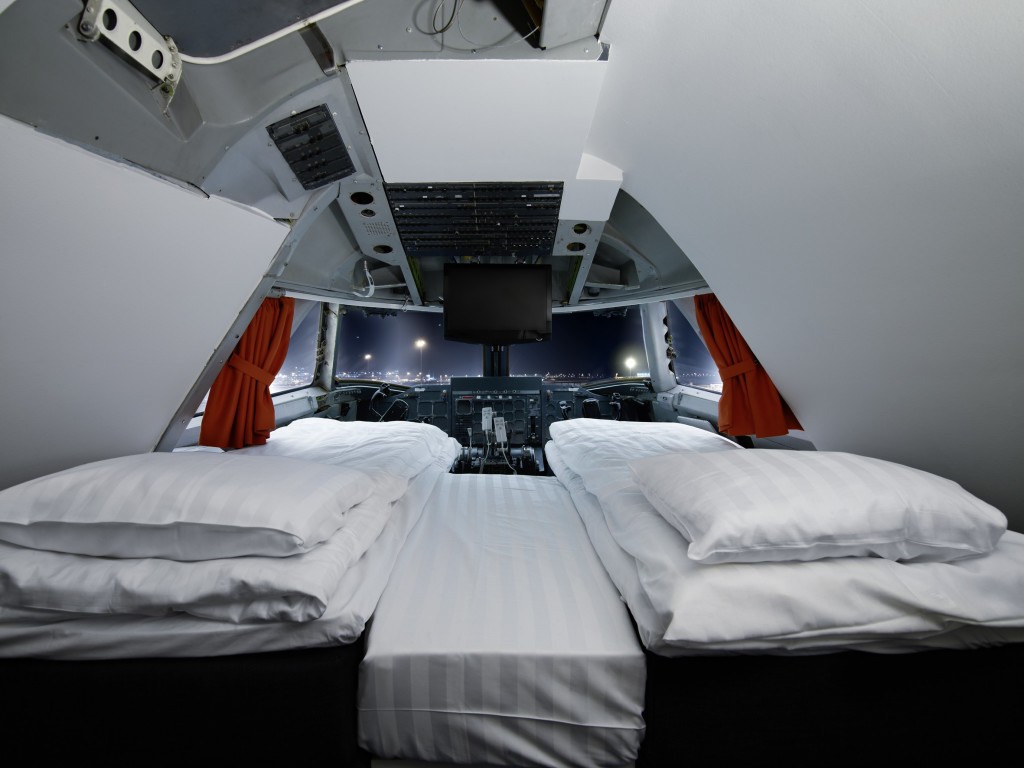Pakistan, with its diverse cultures, people and landscape is a country with great natural and cultural resources. Pakistan has a rich history and there are a number of ancient structures throughout the land that are a testament to this. These lands have been ruled by Alexander the Great, Maurya, Kushans, Arabs, Afghans, Mughals, British and even the White Huns. Pakistan’s Forts and Castles are spread wide across the country, starting from the Princely Province of Azad Kashmir and to all the way in the Province of Sindh. It’s no wonder that Pakistan has remnants of some wonderful historic forts and castles still standing proud. Here are such ancient architectural wonders for you to enjoy:
Derawar Fort

Derawar Fort is a square shaped fortress in the city of Bahawalpur, Province of Punjab. The fort was constructed by Bhati of Jaisalmer who was a Hindu Rajput. It is one of the largest square fortresses in Pakistan and is still in very good condition. It has 40 bastions, which are visible for many miles in the Cholistan Desert. The walls stand up to thirty meters high, have a circumference of 1500 meters. The tombs of the Nawabs of Bahawalpur and their families are also located in this fort.
Altit Fort
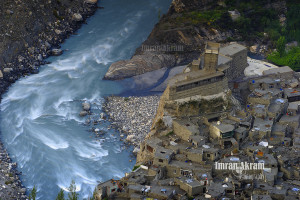
Altit Fort – Pakistan
This Fort is located in Hunza Valley in the province of Gilgit Baltistan in Pakistan. Altit Fort was originally home to the hereditary rulers of the Hunza state who carried the title Mir. The estimated age of the fort is known to be around 900 years, which makes it the oldest monument in Gilgit Baltistan. The Altit Fort was in great disrepair, but has been restored by the Aga Khan Trust, with the help of the Government of Norway and Japan. It has been open to the public since 2007.
Ramkot Fort

Ramkot Fort
It is an ancient Fort situated in Azad Kashmir besides the Mangla Dam. It is accessible through water transport from Dina and by road from Mirpur. The Ramkot Fort is built on the summit of a hill, which was the site of an old Hindu Shiva Temple before the construction of the fort. The fort is built on the hilltop of River Jhelum, with three of its side surrounded by the river. The chronology of the fort’s construction still remains a question.
Baghsar Fort

Baghsar is located in the Samahni Valley near Pakistan-India border in Azad Kashmir. Baghsar means the land of water and gardens. This beautiful place is famous for its lake and the huge granite built Baghsar fort of course. It is also famous for containing the intestines of Emperor Jahangir which are known to be buried here.
Skardu Fort
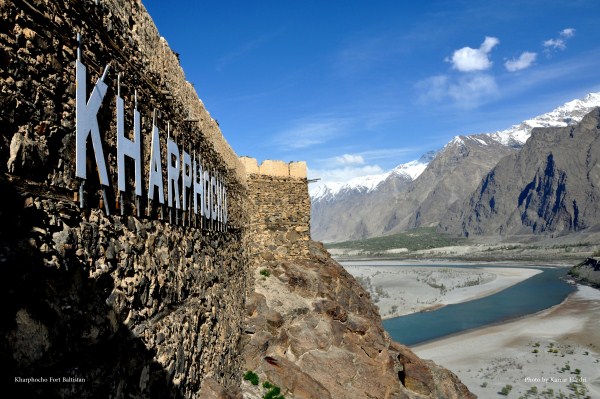
Skardu Fort, known as Kharphocho Fort, is situated in Skardu Valley in Gilgit-Baltistan. It is known as the King of Forts because it is an excellent example of ancient engineering. The fort is built above the junction of rivers and has an ancient mosque that is present inside the castle.
Ranikot Fort
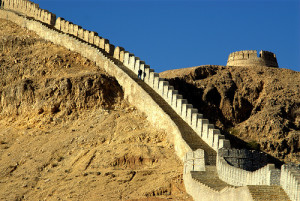
Ranikot Fort, which is also known as the great wall of Sindh, is a historical fort in the Jamshoro district in the Province of Sindh. This fort is believed to be the world largest fort, with a circumference of approximately 26 kilometers (16 miles).
Rohtas Fort
The Rohtas Fort, built in the 16th century, is located near Jhelum city in the Province of Punjab. Within the huge terraced rampart walls with robust bastions and 12 gates, it took 8 years and a force of 30,000 men to complete. The construction of the fort is irregular in shape, with its circumference being 5.2 km.

It was never taken by storm and has survived intact to the present day. The main fortifications consist of the massive walls which extend for more than 4 km, and are lined with bastions and pierced by monumental gateways. It is an exceptional example of early Muslim military architecture in Central and South Asia which is why it is listed as UNESCO’s World Heritage Site.
Multan Fort

The Multan Fort is located near the City of Multan, in the Province of Punjab. The Multan fort is famous for the Sufi Saint, Shah Rukn-e-Alam, who is buried within the boundaries of the fort. Apart from the shrine, most of the fort was ruined by the British in 1848-49 while retaliating against the Sikh governor of Multan. The Multan fort was originally a military installation and a landmark of Indian defense and architecture.
Noor Mahal

The Noor Mahal is in Bahawalpur, Province of Punjab. It belonged to the Nawab of Bahawalpur State during the British Raj. The Nawab built this palace for his wife in 1872 like an Italian Chateau. However, his wife only stayed there for one night and refused to spend another night there because of the view to the graveyard from her balcony. It is now open to public and is currently the property of Pakistan Army.
Royal Fort of Lahore
The Lahore Fort is located in the Northwestern corner in Lahore, Province of Punjab. The origins of the fort are obscure, however the existing structure is said to have been built by the Mughal emperor Akbar. Spreading over 20 hectares, the fort has two gates; Alamgiri Gate built by Emperor Aurangzeb and Maseeti or Masjidi Gate built by Emperor Akbar. The Fort complex includes such architectural marvels as Badshahi Mosque, Sheesh Mahal, Alamgiri Gate, Naulakha pavilion and Moti Masjid. It demonstrates the rich traditions of Mughal architecture.

The City of Lahore is also home to Shalimar Gardens, located 7km from the Lahore Fort, which are also built by the Mughals. The elegance of these splendid gardens is visible by how it is built on three terraces with lodges, waterfalls and large ornamental ponds. These two distinct royal complexes are together listed as UNESCO’s World Heritage Site. One characterized by monumental structures and the other by extensive water gardens, are outstanding examples of Mughal artistic expression at its height.

Looks like that the cut in Air Passenger Duty for children under 12 years has actually worked. An article from Telegraph which was posted on the 15th of June, 2015, shows that there has been an increase in the number of flights booked in May 2015. According to CheapOair, an online travel agency, there has been a 24% increase in family booking to long-haul destinations compared to the same month last year.
According to British Air Transport Association, the UK now imposes the highest tax on flying in Europe. The UK paid £3.14 billion in Air Passenger Duty last year, compared to the £745 million paid by Germany. The German Government has stopped charging APD when travelling to Germany. Other countries like Ireland, Belgium, Denmark, Holland, Malta and Norway have all scrapped their equivalent air taxes in recent years because they believe it was holding back their economic growth.
The website CheapOair said it has seen a rise in particularly flights to destinations like Dubai, Los Angeles, Toronto, Miami and Melbourne. The message that goes to people is that taxing holidays doesn’t work. People will book more holidays if the Air Passenger Duty is reduced, meaning people will book more flights.
A passenger claims to have found a lizard on his in-flight food tray that has resulted in major humiliation for India’s national flag carrier, Air India. The picture that appears to clearly show a lizard lying underneath a packed bread roll has since gone viral. However it is difficult to assess whether the creature is dead or alive or even real.

Lizard ‘found’ on food tray of Air India’s In-Flight meal
Air India has rubbished the claims and strongly denies that the reptile was discovered on board the flight from Delhi to London on Thursday. Taking on twitter to makes its clarifications, Air India’s official account tweeted that: ‘No such complaint has been received from any passenger on board the flight or at Air India office in LHR.‘
However according to a source the passenger was heard screaming and was visibly upset upon receiving the food tray. As reported in The Times of Inda, the source said:
‘A flight attendant got the said meal from the galley and soon after it was placed on to the tray, the passenger was heard screaming.’
The state run carrier is now investigating the incident as ‘mischievous propaganda’.
The bottom line for the state run carrier has been in the red since 2007. Even though Air India has recently started making an effort to improve its image and launched campaigns to enhance it brand value, it has been marred by a string of technical glitches and other embarrassing incidents, including staff turning up late for flights.
In April, the airline made headlines when it had to ground two of its pilots after a fight erupted between the pair just before take-off. [Daily Mail]
#TeamAroma welcomes Mike Horn and the Swiss K2 team that arrived in Pakistan on May 30th after a long drive of 14 days and nights. Travelling across continents, they passed through a dozen countries (Germany, Poland, Lithuania, Latvia, Russia, Kazakhstan, Uzbekistan, Tajikistan, Kyrgyzstan and China) to enter Pakistan.
The team is on a mission! Mission to climb K2, the mighty mountain that was long considered un-climbable as attempts to surmount it in 1902, 1909, 1934, 1938, 1939 and 1953 all failed miserably. K2, world’s second highest mountain strikes terror in the hearts of even the most fearless adventure travelers. Ascending K2 (also known as Chhogori/Qogir, Ketu/Kechu, and Mount Godwin-Austen) is considered incredibly hazardous with one in every four people who have attempted its summit dying in the process! The Swiss K2 teams is now waiting for their security clearance and climbing permit. Though their entire journey was extremely adventurous and thrilling, the real thrill began when they entered Pakistan, a place considered to be a heaven for adventure travel. Because there is nothing as adventurous as narrow roads, bumpy rides and having your jeep cross an enormous dam in a boat. Let us see what their adventure has been like thus far:
The Arrival: The team drove to Pakistan in Mercedes Benz!
Arrived in Pakistan, one of the most beautiful borders to cross! #DrivenToExplore #GWagon
A photo posted by Mike Horn (@mikehornexplorer) on
Encountering exotic creatures in Pakistan
My first ever snow leopard I have seen. #Pakistan A photo posted by Mike Horn (@mikehornexplorer) on
Follow the team as they complete their adventure!
Good luck from #TeamAroma
Travel and Tourism blogs have all been talking about the recent news which broke out on Monday, 10th of May about the Jordanian Government easing regulations on visa entry into Jordan. Following a meeting with Their Majesties King Abdullah II and Queen Rania, the Jordanian Government has approved several measures to uplift the tourism sector, designed to make travelling to Jordan more convenient for people of all nationalities. The following amendments have been agreed upon, sourced from Jordan Tourism Board:
- Waiving visa fees for tourists of all nationalities coming through Jordanian tour operators whether traveling individually or in groups. The visa fee is waived on the condition that the traveler/travelers spend a minimum of two consecutive nights in Jordan.
- Waiving visa fees for individual tourists who have organized their trip to Jordan without arrangements through a tour operator and have purchased the unified tourist site ticket on the condition that they spend a minimum of three consecutive nights in Jordan.
- Reducing visa fees for tourists entering Jordan through land borders. The visa fee will be reduced from 40 JOD to 10 JOD on the condition that these tourists spend a minimum of three consecutive nights in Jordan.
- Waiving departure tax for all scheduled flights from Aqaba and Amman, on the condition that tourists purchase the unified tourist site ticket and spend a minimum of three consecutive nights in Jordan.
- Waiving the departure tax and entry visa for all low cost and charter flights leaving King Hussein International Airport, Aqaba.
The easing of Jordanian Visa Requirements will surely help the country boost its tourism, although there is huge potential in the upcoming years to visit places like Petra, in Amman and the famous Ancient Roman City of Jerash. Forth coming this news, Aroma Travels have been working together with Jordanian Tour Operators to provide the best packages for you to visit Jordan. Check out these packages on our website by the end of this week!
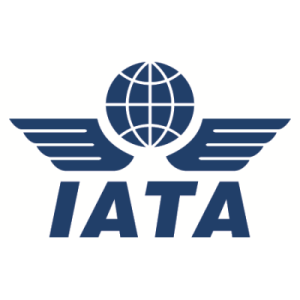
Things are starting to look bright for the aviation industry, as it shows a record $29.3 billion net profit projection. The International Air Transport Association (IATA) on Monday issued a revised profit forecast which is 17.3% higher than its previous projection of $25 billion, and is 78.65% more than the $16.4 billion registered in 2014. This shows a considerable amount of increase in profitability since the past year, which is due to lower fuel prices and has been the prime factor for raising profitability. The other reason might be because of the appreciation in the US dollar.
This year’s revised profit into average net earning totals to 4%, a record in more than a decade and with almost double from last year’s 2.2%. The industry’s fuel bill has decreased by $35 billion since last year when it dropped from $226 to $191 billion. But the funny thing is that even though, the profits from the aviation industry are not greater than what other industries make so there is still more room for profit maximization. The passenger numbers are still expected to top 3.5 billion for the first time in 2015.
Also, for the first time in the aviation industry the average return on invested capital will be in excess of its cost of capital to reach 7.5%. This industry average is dominated by airlines in the US, which have benefited the most from the fall in USD denominated fuel prices. The average non US airline is still struggling with returns below the cost of capital and significant debt burden quoted by the IATA chief.
The expected profit for this year has been dominated by carriers in North America which are expected to generate $15.7 billion out of the total $29.3 billion. On the other hand carriers in Latin America only expect $600 million from a break-even performance since in 2014.Carriers in the Asia-Pacific region are expected to generate a $5.1 billion profit with Middle Eastern airlines to make $1.8 billion. European airlines are expected to post a collective profit of $5.8 billion. Lastly, carriers from the Africa only expect a profit of $100 million, the thinnest of all regions.

United Kingdom’s customs authority have detained five PIA crew over smuggling and money laundering on Monday 8 June 2015m as reported by Dawn News. According to the news source PIA’s flight PK-788 from London to Karachi was delayed when London airport authorities searched the crew’s luggage for almost two hours, after which seven crew members were taken into custody. Insured Mobile phones and Large sums of money were recovered in the search. Two crew members were later released.
This is not the first time PIA’s crew has been alleged with sumggling. PIA’s crew on numerous occasions has faced probes from domestic as well as international authorities for violating regulatory procedures.
Almost a month ago, Shaukat Ali Cheema, 59, A Pakistan International Airlines (PIA) steward, was arrested at Birmingham airport, after 26 passports and 37 passport bio-data pages were discovered in his underwear.
Almost 2 months ago, the Heathrow airport has issued a “yellow card” (or warning) to the Pakistan International Airlines (PIA) for allegedly violating laws of the United Kingdom. This action was taken as PIA’s crew are allegedly involved in carrying restricted items or goods in excess of their (duty-free) personal allowances.
Flying is still one of the safest forms of travel; however the aviation industry has seen considerable amount of fatalities due to the growth in travelers. Even though, some airlines have been very strict about safety regulations and have been successful in minimizing such fatalities. Here is a list of the world safest airlines by Business Insider, sourced from AirlineRatings.com.
Qantas Airways
Qantas Airways has maintained its 94 years long image, with no fatal crashes after 1951 till date. This company’s reputation and mystique is built upon its safety record and therefore it has been crowned as the fatality free airline in the jet era.
Air New Zealand
Air New Zealand has made a fine recovery after its financial turmoil in the early 2000’s. Over the past years, Air New Zealand has made its place in the safest airlines of the world because It has not suffered any significant fatalities.
Singapore Airlines
Known for its high quality service and efficient operations, this Changi airport based airliner has been accident free since 2000. Singapore airlines provide maximum services along with being one of the safest airlines in the industry.
Emirates
Since its inception in 1985, Emirates has become one of the leading airlines in the industry. In these 30 years of service, the airliner has maintained near-perfect safety record with suffering not a single fatal accident.
British Airways
British Airways is one of the biggest and best airlines of Europe, Although it has been in the news several times for a couple of accidents, it has only suffered one fatal crash in 1976 since its formation in 1974.
Finnair
As Finland’s national airline, it does not get a lot of attention from the media. However, it has one of the best safety records in the industry and has not suffered any major accidents since the 1960’s.
Cathay Pacific
A leader in the aviation industry for providing high quality service and also winning the best business class twice in a row, It is just as competent in terms of safety. Outside of terrorist attacks, it has not suffered any fatal accidents since the 1960’s.
Spend the night on a plane… without leaving the ground! Boeing Jumbo Jet plane transforms to become one of a kind hotel. Retired Boeing jumbo jet has been made over into a 33-room Jumbo Stay Hotel. This Unique hostel, a former Pan-Am plane, is just 65ft from Stockholm-Arlanda Airport in Sweden.
The brainchild of barmy businessman, Oscar Dios, the entrepreneur spent over £1.5million (€2million) over six months to transform the huge plane into the aptly named Jumbo Stay Hotel. The cockpit has been swapped for a bedroom at the unusual hostel, located just outside of Stockholm-Arlanda Airport.
After stripping the plane of its 450 seats, the previous aircraft now brags 33 unique rooms and additionally an extravagance suite for the individuals who need to make their stay considerably more huge. Visitors can take in the stunning, panoramic views of the runway from the cosy changed over cockpit, and enjoy the privacy of their own en-suite washroom. However, that isn’t all, guests can likewise kick back in the lounge, in restored couches or sip up from martini glasses in the comfortable on board bar.
The room per night varies from the lowest $59.25 to the high end cockpit room for $434 per night.
From a bit of market research, we know that people would have to pay approximately $20,000 for a trip to orbit space. But most people are disappointed because they end up paying so much and their desire is to stay in space for a few days or more is not fulfilled. Luckily this has caused for a potential market of orbital accommodation which is good news for investors and people who would love to travel to space. In order for space tourism to reach its full potential, there has to be sufficient development in orbital accommodation so that people will have a choice to stay in space, and the cost of getting there and staying there has to decrease overtime with its development so more people can afford it.
In recent years, some commercials spaceliners have sprung up like the XCOR Aerospace founded in 1999 and Virgin Galactic founded in 2004. These companies have been working to launch their spaceliners for commercial/tourism purposes in the upcoming years. Although there have been some flights brokered by Space Adventures to the International Space Station by a Russian Soyuz spacecraft with being $20 million in 2001 and $40 million in 2009. Russia has halted orbital space tourism in 2010 due to its increase in its large crew size, but they have planned to resume it by 2015.
The hotels planned to be opened in space will vary greatly, from being quite simple in the early days to huge luxury structures in future. It is very shocking that there were a few designs published since 1997. This is probably because those who design are expecting the launch costs to decrease so it is more feasible.
In order for space tourism to be successful, organizations need to work together to overcome some problems. The main problem about space is that it costs too much to get there and this is because the launch vehicles are expendable. They need reusable launch vehicles which will not only reduce the cost but can be a sustainable option. The second problem is that most people aren’t familiar with the concept of space tourism, which are people like in the space industry, who think that space is for activities like research and military operations. On the contrary to what people assume, space agencies are not at all interested in space tourism. This is a pity because space activities will never be profitable until tourism service begins, remaining small scale, expensive and dependent on taxes coming from general public.

